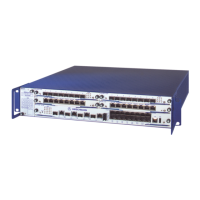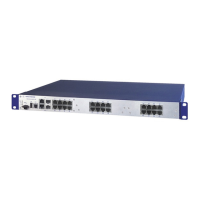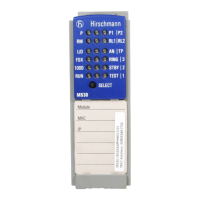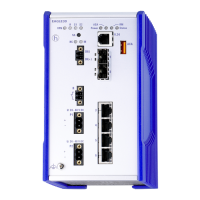Redundancy
200
7.5
Spanning Tree
RM Web
Release
6.0
07/2010
Received bridge
ID (read only)
Displays the remote bridge ID from
which this port last received an STP-
BPDU.
In the stable condition (no topology
change), this is usually the
designated bridge ID, as only its port
has the role “designated” and thus
sends BPDUs.
Bridge ID
(format ppppp /
mm mm mm mm mm mm)
-
Received port
ID (read only)
Displays the port ID at the remote
bridge from which this port last
received an STP-BPDU.
In the stable condition (no topology
change), this is usually the
designated port of the designated
bridge, as only its port sends
BPDUs.
Port ID,
format pn nn,
with p: port priority / 16,
nnn: port No., (both
hexadecimal)
-
Received path
costs (read only)
Displays the path costs of the
remote bridge from its root port to
the CIST root bridge.
0-200,000,000 -
Admin Edge
Port
Activate this setting when a terminal
device is connected to the port.
Then the port immediately has the
forwarding status after a link is set
up, without first going through the
STP statuses. If the port still
receives an STP-BPDU, the device
blocks the port and clarifies its STP
port role. In the process, the port
can switch to a different status, e.g.
forwarding, discarding,
learning.
Deactivate the setting when the port
is connected to a bridge. After a link
is set up, the port then goes through
the STP statuses first before taking
on the forwarding status, if
applicable.
This setting applies to all MSTIs.
active (box selected),
inactive (box empty)
inactiv
e
Parameter Meaning Possible Values Default
Setting
Table 90: Port-related STP settings and displays, CIST
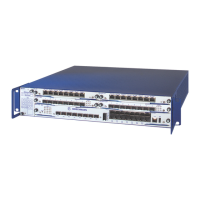
